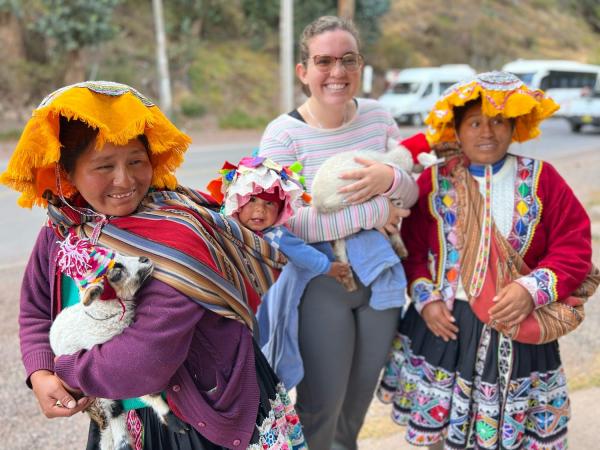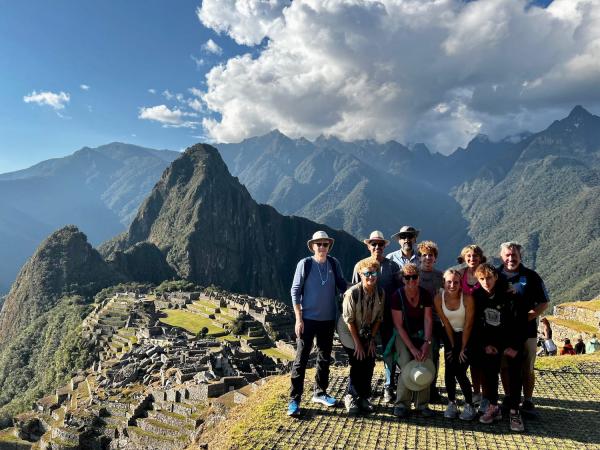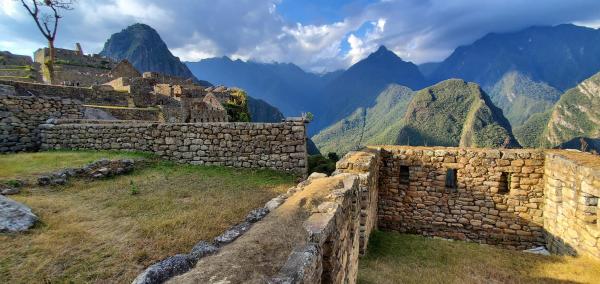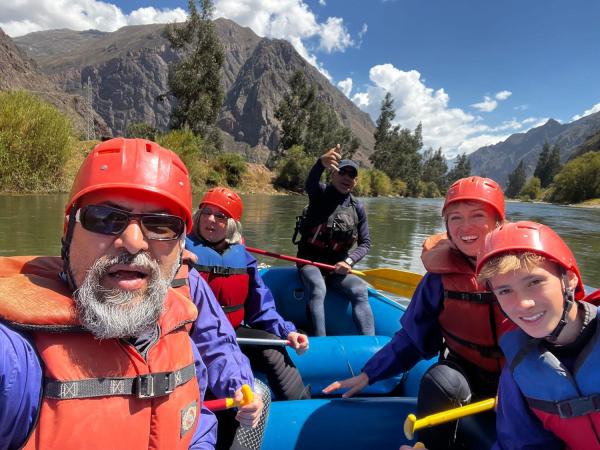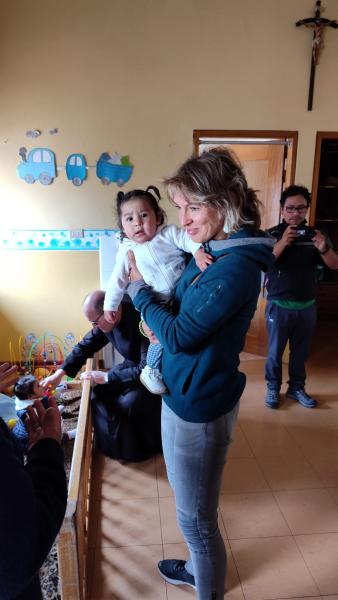 Menu
Menu
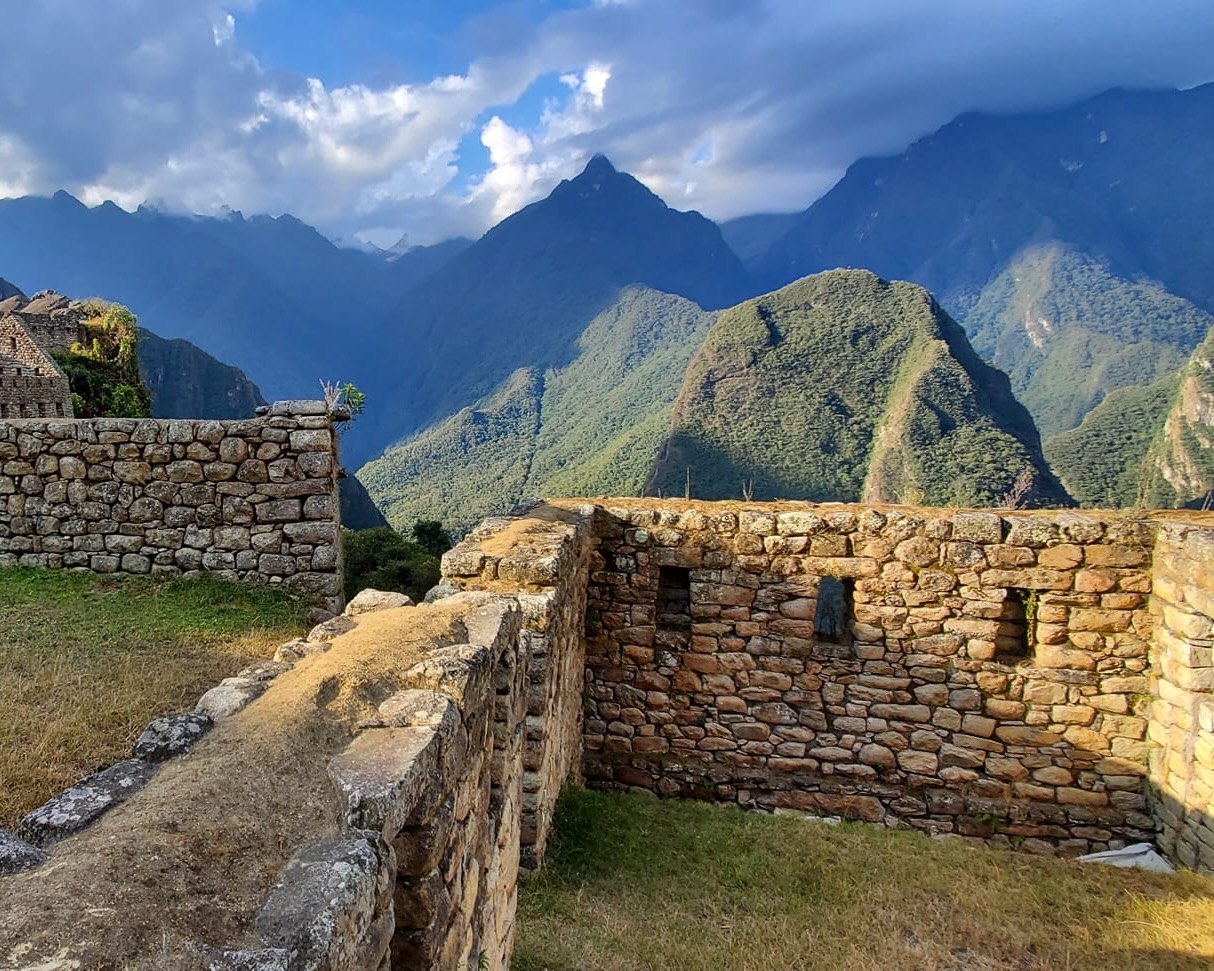
What do groundhogs and guinea pigs have in common? Well, at least some Groundhogs have a connection to Peru — newly discovered for UD alumni, families and students who just returned from a trip to Lima, Cusco, Machu Picchu and the Sacred Valley of the Incas. And some of us did eat roast guinea pig, a specialty in the Andes, quite succulent despite its meager size and flavored with fat under its crusty skin, lime marinade, and smoke from the adobe wall oven. We were told to eat the head because the brain would help us gain wisdom. We worked on it until we discovered its teeth — firmly encrusted and enclosed in a vicious overbite grimace — and with them the striking resemblance to our beloved unofficial mascot.
Our journey started, ironically, with plans to go to Russia four years ago, when Dr. Rich Olenick and I talked about organizing a tour of literary Russia and taking UD alumni to distinguished writers’ house museums, besides the main historical and cultural attractions. The trip was thwarted first by COVID-19 and later by Russia’s aggression into Ukraine, which made it impossible for me to ever want to return to Russia. But we were so excited about the idea of traveling with alumni and students that we looked for another destination. Peru was a natural choice due to its rich pre-Columbian history and mysterious civilizations, where we metaphorically travel during our Spanish classes at UD. The Inca are the best-known, but the Wari, Nazca, Chavin de Huantar, Moche and many other cultures flourished in Peru for millennia prior to the arrival of the Spanish in 1531. We also dreamed about observing Southern skies and learning about the Inca’s cosmovision.
However, new obstacles emerged as protests against the government broke out late last year in southern Peru, culminating in roadblocks and the closure of Machu Picchu in early February. It seemed we were plagued by bad luck. We postponed the trip until August, and we lost half of the 45-person group. Dr. Olenick also had to cancel due to unforeseen circumstances. To add to my anxiety, the educational tour company in charge of logistics informed me two days before the trip that they had failed to secure permits to climb Huayna Picchu, the majestic mountain adding the picturesque backdrop to the ancient town of Machu Picchu. I was nervous. What else could go wrong?
As if by magic, everything came together on the day we traveled. I met some of the most flexible, kind-hearted, smart and fun people I now have in my life. We came from different backgrounds, our age range extended from 14 to more than 70 years old, and we had different tastes, but we were bonded by our UD connection and our passion to travel and learn. We saw and walked a ton: We visited churches and colonial sites in Lima and traveled to Cusco, the ancient capital of the Incan Empire, also known as the navel of the world. In addition, we saw many other archeological treasures of the sacred Inca Valley and witnessed the mysterious grandeur of Machu Picchu. We combatted furious altitude sickness with the traditional Andean remedy of coca leaf tea. We broke bread and pisco together. We viewed Southern sky constellations in the 40-degree crisp Andean night and learned about Incan astronomical beliefs at the Cusco Planetarium. We even did whitewater rafting — initially promoted as a leisurely ride along the Urubamba River — masterfully and heroically handled by our team. The kids (and one adult) even backflipped into the freezing water. As my family disapprovingly informed me afterwards, I was the only one visibly agitated about level-three rapids. My kids, another source of my worry, became friends with my students, which greatly enhanced my personal experience (for I knew they were in good hands).
An indisputable highlight of the trip was a visit to the Mission of the Servants of the Poor in the vicinity of Cusco. Mrs. Susan Fay, BA ’88, a UD alumna and mother of two UD students, helped me get in touch with the mission director, Fr. Walter Corsini, as she and her family had been missionaries there several times. The visit was eye-opening, heartbreaking and immensely gratifying. The mission is home to an orphanage for both healthy and severely handicapped kids of different ages who stay in impeccably clean and warm rooms surrounded by the love of the nuns. They welcomed us as family. Many would hug us and hold our hands as we walked around. A girl about four years old named Ruth with several life-threatening conditions followed us around the premises and would not let go of the hand of one of us. The sister in charge told us Ruth would be in heaven soon, and they were making sure to give her all the love they could. Her lonely figure in the courtyard waving us goodbye as we were leaving stays before my eyes.
More cheerful was the visit to the school for poor kids run by missionaries at the same premises. Kids stay there only during the day and receive free meals while attending regular classes and workshops to teach them art, cooking and weaving, among other skills. I keep precious souvenirs from the place: a ceramic nativity scene with Jesus, Mary and Joseph dressed in Andean-style ponchos and hats, surrounded by alpacas, and a beautiful woven bag in the typical design. Many from our team vowed to return.
Did I mention how much fun this UD crowd was? One night, exhausted after climbing Machu Picchu, we broke into spontaneous karaoke singing and dancing in a local restaurant, becoming an attraction for tourists and locals staring and filming us and probably making the owner consider kicking us out. The next morning, as some of us walked by the same restaurant, the server from the previous night happily greeted us. He had not seen another night like that during his career, and he made sure we knew. Toward the end of the trip, we became family, reluctant to say goodbyes. And I did become wiser. Not thanks to the guinea pig, of course, but to all the amazing Groundhogs I encountered during this adventure.
Irina Rodriguez has taught in the Spanish, Italian, French and Comparative Literature programs at the University of Dallas since 2010. She established the UD study abroad program at the Catholic University of Lyon, France, and has led study abroad programs to Costa Rica, France, Italy and South Korea at UD and other universities. Prior to coming to UD, she taught Italian at the University of Kansas and worked in international marketing. Her book, My Soviet Youth: A Memoir of Ukrainian Life in the Final Years of Communism (McFarland, 2019), is a memoir of being a part of the last generation to grow up under Soviet power.
